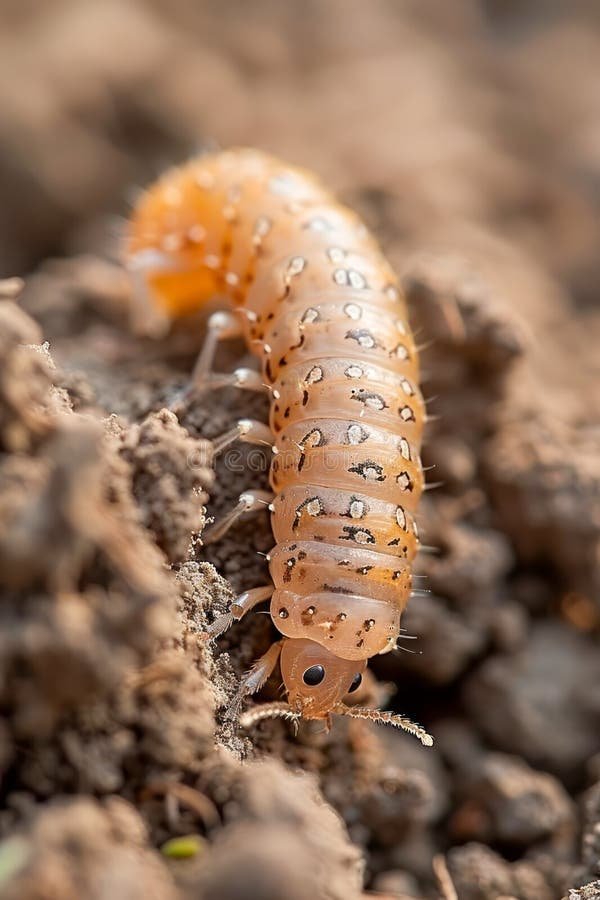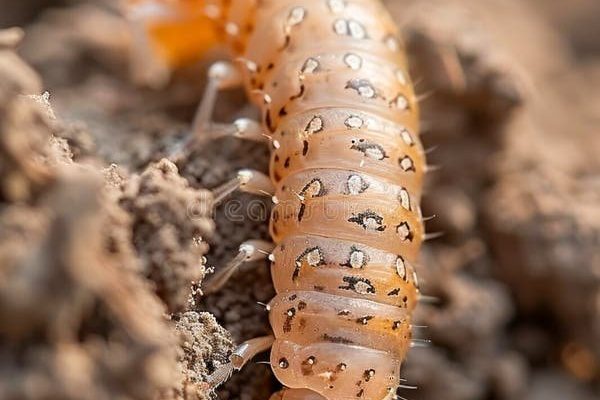
Grub worms, which are often the larvae of various beetles, can wreak havoc on lawns and gardens. They feed on the roots of grass and plants, leading to bald patches and unhealthy growth. So, if you’re trying to keep your garden blooming or your lawn lush, knowing their preferred habitat can be a game-changer. It’s like trying to find out where your favorite restaurant is—once you know, it’s easier to avoid a not-so-pleasant experience!
Understanding Grub Worms
Before we dive into soil types, let’s chat about what grub worms actually are. These little guys are typically the larvae of beetles, and they can cause significant damage to your garden or lawn. Most commonly, you’ll encounter the larvae of Japanese beetles or June bugs.
Grub worms are usually white and have a C-shaped body. They thrive on common grasses, which can make them a gardener’s worst nightmare. When they munch on roots, your grass can start to wilt, turn brown, or even die, creating patches that look like they’ve been scorched by the sun.
Here’s the thing: understanding these pests is the first step toward managing them effectively. By knowing what they are and what they like, you’ll be better armed to keep your garden healthy.
The Basics of Soil Types
Soil comes in all shapes and sizes, but the two that we’re most curious about today are sandy and clay soils. These two types have completely different textures and properties.
Sandy soil is light, drains well, and tends to warm up quickly in the spring. If you were to run your fingers through it, it would feel gritty and loose. This type of soil can be great for plants that prefer well-drained environments but might not hold nutrients as well.
On the flip side, clay soil is dense and heavy. It can be a challenge to work with because it retains moisture and can become easily compacted. When wet, it’s sticky and when dry, it hardens like rock. While it holds nutrients well, it can suffocate roots if it becomes too waterlogged.
Understanding these characteristics can help you decide where grub worms might thrive—or struggle.
Do Grub Worms Prefer Sandy Soil?
You might be wondering if grub worms like sandy soil. Well, the answer isn’t black and white. On one hand, sandy soil drains quickly and provides less moisture retention, which is not ideal for grub worms. They prefer a bit more moist environment, as it allows them easier access to roots and organic matter.
However, grub worms can occasionally be found in sandy areas if there’s enough organic material for them to munch on. Think of it like a buffet—you need more than just a salad to keep them interested. If the sandy soil is enriched with compost or organic matter, they’re more likely to stick around.
In conclusion, while sandy soil isn’t their first choice, it’s not impossible for grub worms to thrive there under certain conditions. A healthy balance of organic material can create an inviting environment.
Do Grub Worms Prefer Clay Soil?
Now let’s talk about clay soil. Honestly, this is where grub worms often feel right at home. The dense, moist environment of clay can be perfect for them. With its ability to retain water, clay soil keeps the conditions favorable for grub worms to thrive.
Clay provides a great habitat for them to find their favorite meals—those delicate plant roots. When conditions are ideal, you’ll find that grub worms can multiply quickly in clay soil. This is a concern for gardeners, especially in regions where clay is the dominant soil type.
The downside? If your soil becomes too compacted, it might suffocate plant roots, leading to more challenges beyond just grub worms. So, while they might love clay, too much compaction can create a problem for your plants.
Managing Grub Worm Populations
If you find grub worms in your garden, whether in sandy or clay soil, you might be feeling a bit anxious. But don’t worry—there are ways to manage these little pests! Here are some practical steps you can take:
- Watering Wisely: Water your lawn in the early morning or late afternoon to help prevent grubs. Overwatering can make the soil inviting for them.
- Natural Predators: Encourage birds and beneficial insects that naturally prey on grub worms, like nematodes.
- Healthy Soil: Improve your soil’s health by adding organic matter. Healthy soil can deter pests while supporting your plants.
- Regular Inspection: Check your lawn regularly for signs of damage. Early intervention can prevent a minor issue from becoming a full-blown infestation.
By taking these steps, you can create an environment less conducive to grub worm populations, regardless of your soil type.
In the end, whether grub worms thrive in sandy or clay soil depends largely on the conditions you create. While they prefer the moisture retention of clay, sandy soil isn’t entirely off the menu if it’s well-enriched.
Ultimately, understanding how soil type affects grub worms can help you maintain a healthy garden. Just like choosing a restaurant, knowing the preferences of your pests can help you avoid unpleasant surprises. So next time you’re working in your garden, keep an eye on those soil types and make choices that keep your plants thriving and those pesky grubs at bay!

